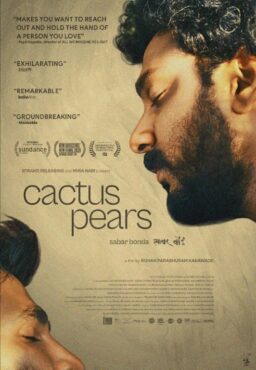TORONTO — We are a little past the halfway point of the 23rd Toronto Film Festival, and my colleagues are looking more hollow-eyed and gaunt than usual. It is a strange occupation, going to three or four movies a day, and critics begin to resemble fishlike creatures from unlit caverns. This year is worse than usual, because the facilities are better.
Millions have been spent to enlarge the Varsity theaters, where most of the press screenings are held, and where before there were two screens, there are now, I dunno, nine or 10. Because there are more screenings, critics feel guilty if they don’t attend more movies; they scurry from one room to another, surfing on the buzz.
This ordeal is made merry by the sight of at least two or three critics falling flat on their faces at every screening. That’s because the theaters feature “stadium seating,” which means that each row is a little higher than the one in front of it. That would be splendid, except that the aisle steps do not match the levels of the seat rows.
“Excuse me,” a latecomer will politely whisper, “but is that seat taken?” “No,” comes the whispered response, followed by sudden cries of alarm as the latecomer pitches forward into the laps of three or four patrons, and popcorn flies everywhere. Leaving the movie, they trip over the step and fall into the aisle.
I am reminded of the inaugural year of the new Palais des Festivals at Cannes, where the grand exterior staircase was pitched too steeply, and in the crush of paparazzi, it appeared that a domino effect might send the cream of the French cinema rolling and tumbling to the bottom, with Gerard Depardieu landing atop Catherine Deneuve and squishing untold beauty out of the world. Cannes rebuilt the staircase, and the Varsity theaters may have to fine-tune those stairs.
Despite these occupational hazards, I have been having a good time, because the films are fine and there are more than 300 of them. Some will open in the next week or two, and will get their reviews then. Others deserve special attention.
One is “God Said, Ha!” This is a performance film by Julia Sweeney, formerly of “Saturday Night Live” (you may remember her character, the omni-gendered Pat). It is simply Sweeney onstage in front of an audience, talking about a year in her life during which her brother developed a virulent form of cancer, and other bad things happened, too – although I will leave the film with its surprises.
The movie is not a dirge of bad news, but a brave and funny reshaping of the material. Just as she had finally broken free of her large Irish-American family from Seattle and bought her own little house in Los Angeles, her brother fell ill – and brother, father and mother all moved in with her, along with a lot of heirloom furniture, which was so familiar that it created the eerie hallucination that she had moved back in with them.
Like all good performance films, “God Said, Ha!” plays not like a monologue, but like a radio drama. Sitting here now, I can picture the little home and the midnight trip to the hospital as if I’d seen them in a movie. The film works as comedy, and yet its feelings are real.
“Down in the Delta” is the first film directed by poet Maya Angelou, and it’s not as much a story as a fable of memory and recovery. It stars Alfre Woodard as a woman who lives in a Chicago public housing complex with her mother, her son and her brain-damaged daughter. The Woodard character is unemployed and unemployable (no math skills), and spends her days drinking booze and smoking weed. Her mother sees that she’s headed for worse, and sends her and her children south for the summer, to her only brother (Al Freeman Jr.), who lives on the family homestead in the Mississippi Delta with his wife, who has Alzheimer’s.
The story centers on a family heirloom, a silver candelabra, that at first seems like an obvious story gimmick, and then takes on deeper meanings, until finally it represents the very history of this family. Freeman, so wonderful in “Once Upon A Time . . . When We Were Colored,” has some of the same strengths here, as a man who sees well, feels deeply and chooses his moments. And Woodard’s performance moves quietly from the despair of the opening scenes to the hope of the closing ones. At a festival where gimmicks, cynicism and the flavor of the month are routinely overpraised, here is a film of real worth.











